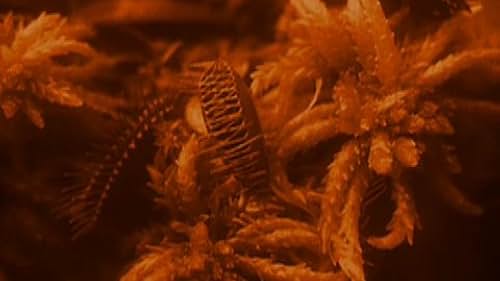Vampire Count Orlok expresses interest in a new residence and real estate agent Hutter's wife.Vampire Count Orlok expresses interest in a new residence and real estate agent Hutter's wife.Vampire Count Orlok expresses interest in a new residence and real estate agent Hutter's wife.
- Awards
- 3 wins & 2 nominations
Gustav von Wangenheim
- Hutter
- (as Gustav v. Wangenheim)
Greta Schröder
- Ellen - seine Frau
- (as Greta Schroeder)
Georg H. Schnell
- Harding - ein Reeder
- (as G.H. Schnell)
Karl Etlinger
- Kontrolleur am Kai
- (uncredited)
Guido Herzfeld
- Wirt
- (uncredited)
Hans Lanser-Ludolff
- A magistrate
- (uncredited)
Loni Nest
- Child at Window
- (uncredited)
Josef Sareny
- Head Coachman
- (uncredited)
Fanny Schreck
- Krankenschwester im Hospital
- (uncredited)
Eric van Viele
- Matrose 2
- (uncredited)
- Director
- Writers
- All cast & crew
- Production, box office & more at IMDbPro
Storyline
Did you know
- TriviaThe movie was banned in Sweden due to excessive horror. The ban was finally lifted in 1972.
- Goofs(at around 30 mins) When Hutter is writing his letter to Ellen in Count Orlok's castle, the paper that he is meant to be writing on is clearly blank throughout the scene.
- Quotes
Graf Orlok: Your wife has such a beautiful neck...
- Alternate versionsThere are a confusing number of different surviving prints, restorations and alternate versions of Nosferatu. In the main, there are three 'complete' restorations and two incomplete, partially-restored versions. All five are available on DVD, while the latest two restorations, from 1995 and 2006, are also on Blu-ray. In addition there are countless low-quality public domain DVDs with different lengths, running speeds and soundtracks. All are derived from a single print held by the Museum of Modern Art (MoMA). They usually have replacement American intertitles and are always in black and white; the film was originally color tinted throughout and only meant to be seen that way. This comprehensive article explains all of them simply and clearly: Nosferatu: The Ultimate Blu-ray and DVD Guide.
- ConnectionsEdited into Boo! (1932)
Featured review
Good mixture of suspense and action
I watched the Kartes Video Communications 1984 video cassette version on a 15 inch screen. Titles were in English. Film quality was good. Sound was matched to action. Cropping appeared good, and titles were completely visible. This should give an idea of the technical quality of the release I watched.
Nosferatu is one of the few silent movies with a significant following today. It deserves a following. The film is a suspense piece. Still it is paced nicely so that it feels tense in the right places but never goes long enough without something happening so as to be boring.
Visually Nosferatu forms the precedent for the vampire in movies. The main difference is that Count Nosferatu has more affinity with rat than bat. Aside from this the main stream image of the vampire is based heavily on Nosferatu. This film has been as influential on modern vampire mythology as the novel Dracula. It is based on the novel Dracula. Especially disturbing to me personally are NosferatuÕs twisted hands.
In terms of the filmÕs being silent, this should not put anyone off. The suspense/ horror genre fits well into this medium. I was lucky enough to see a version with music matched to the scenes, but if the copy you are watching has a bad sound track just play some music you like.
I recommend this film to anyone interested in the horror or suspense films. It is a bit of a cult film, but this does not keep it from being actually good.
Nosferatu is one of the few silent movies with a significant following today. It deserves a following. The film is a suspense piece. Still it is paced nicely so that it feels tense in the right places but never goes long enough without something happening so as to be boring.
Visually Nosferatu forms the precedent for the vampire in movies. The main difference is that Count Nosferatu has more affinity with rat than bat. Aside from this the main stream image of the vampire is based heavily on Nosferatu. This film has been as influential on modern vampire mythology as the novel Dracula. It is based on the novel Dracula. Especially disturbing to me personally are NosferatuÕs twisted hands.
In terms of the filmÕs being silent, this should not put anyone off. The suspense/ horror genre fits well into this medium. I was lucky enough to see a version with music matched to the scenes, but if the copy you are watching has a bad sound track just play some music you like.
I recommend this film to anyone interested in the horror or suspense films. It is a bit of a cult film, but this does not keep it from being actually good.
helpful•4612
- gagewyn
- Feb 20, 2000
Details
- Release date
- Country of origin
- Official site
- Languages
- Also known as
- Nosferatu, a Symphony of Horror
- Filming locations
- Starhrad Castle, Nezbudská Lúcka, Slovakia(castle in ruins)
- Production companies
- See more company credits at IMDbPro
Box office
- Gross worldwide
- $21,401
- Runtime1 hour 34 minutes
- Sound mix
- Aspect ratio
- 1.33 : 1
Contribute to this page
Suggest an edit or add missing content


































